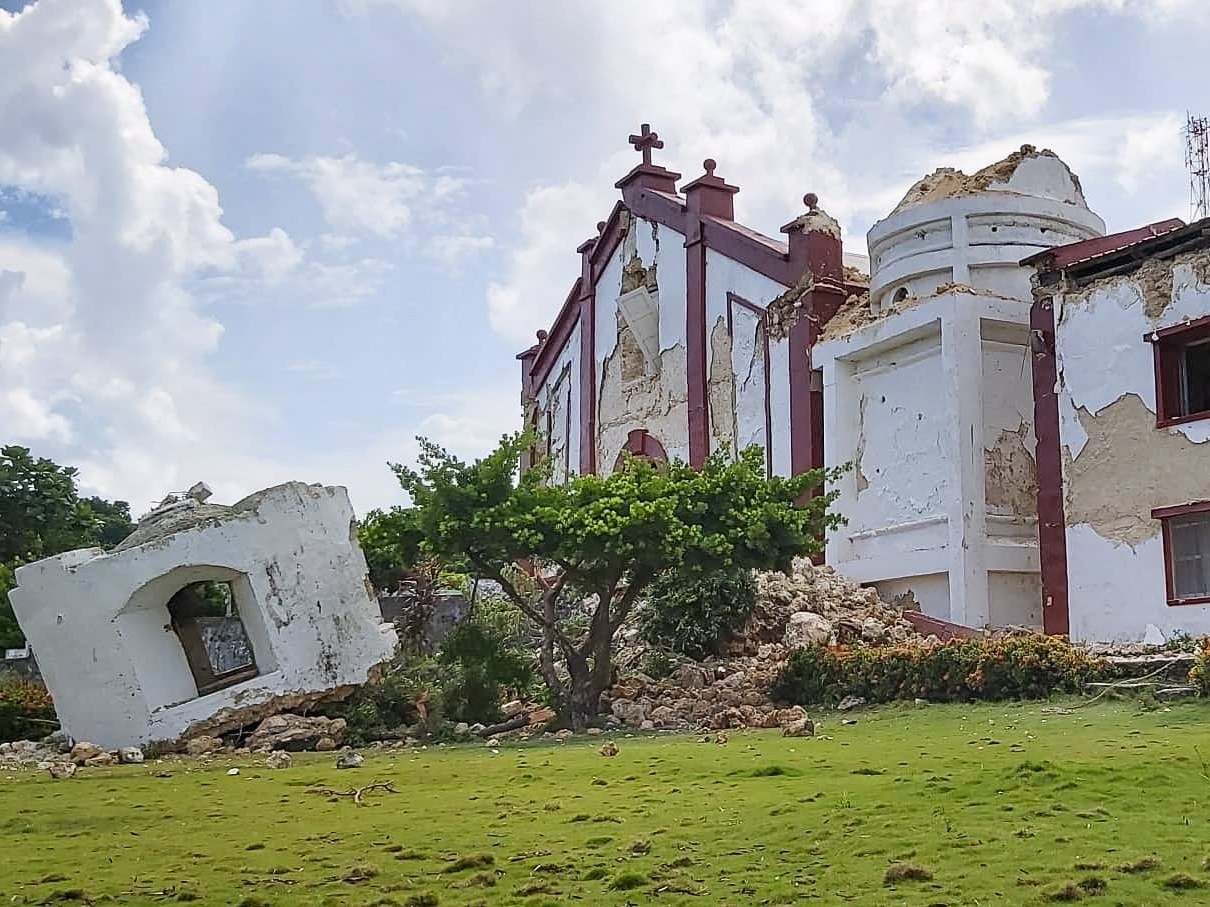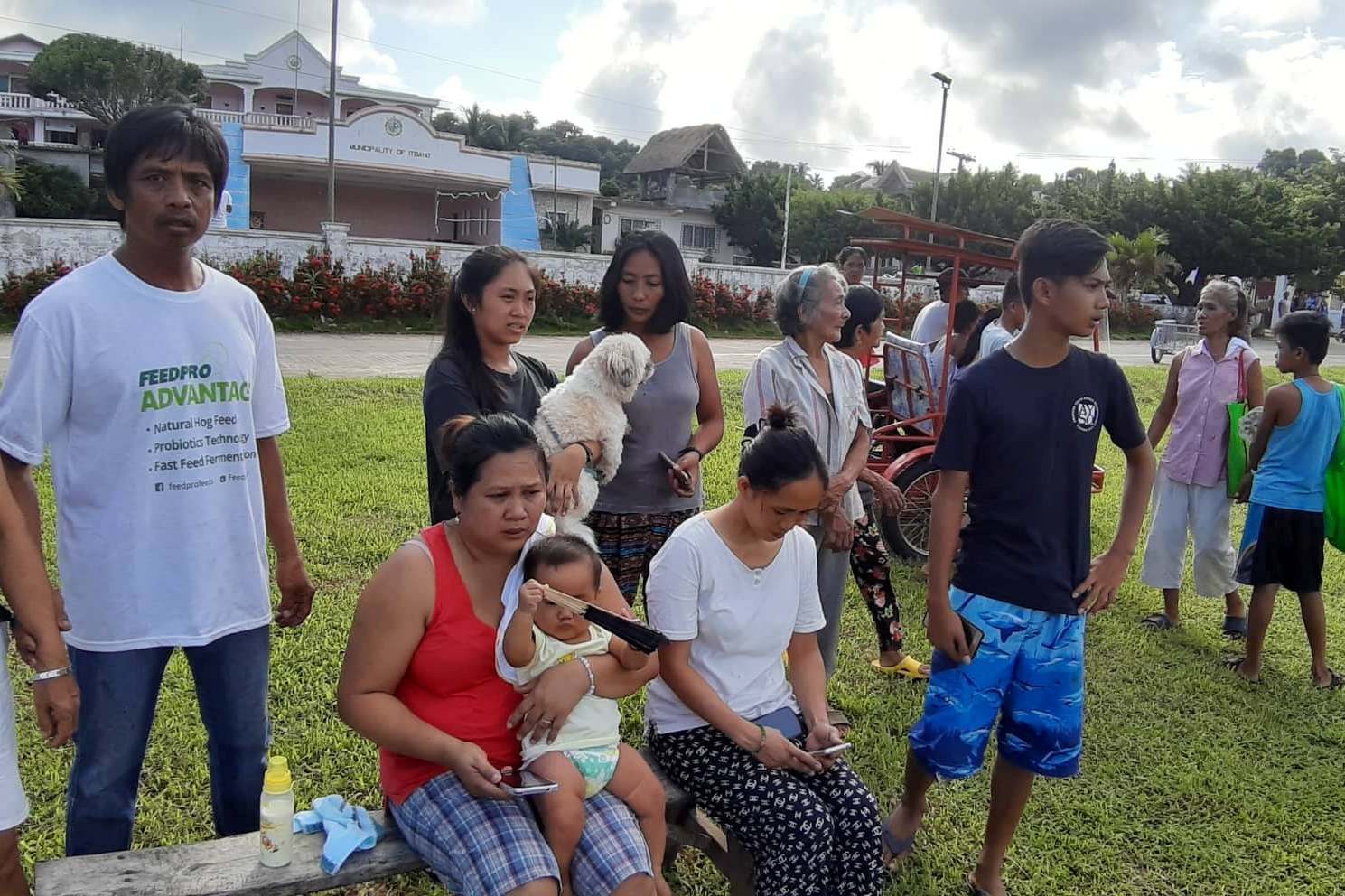Philippines earthquakes: Eight dead and 60 injured as quakes hit north of country
The initial 5.4 magnitude quake severely cracked the bell tower of Itbayat island’s old limestone church, the 19th century Santa Maria de Mayan. The tower collapsed when the second 5.9 magnitude tremor hit hours later
Your support helps us to tell the story
From reproductive rights to climate change to Big Tech, The Independent is on the ground when the story is developing. Whether it's investigating the financials of Elon Musk's pro-Trump PAC or producing our latest documentary, 'The A Word', which shines a light on the American women fighting for reproductive rights, we know how important it is to parse out the facts from the messaging.
At such a critical moment in US history, we need reporters on the ground. Your donation allows us to keep sending journalists to speak to both sides of the story.
The Independent is trusted by Americans across the entire political spectrum. And unlike many other quality news outlets, we choose not to lock Americans out of our reporting and analysis with paywalls. We believe quality journalism should be available to everyone, paid for by those who can afford it.
Your support makes all the difference.Eight people have died and 60 were injured as a series of strong earthquakes hit a group of sparsely populated islands in the northern Philippines early this morning.
The damaging quakes saw residents rush into the streets, as houses collapsed and the bell tower of an old 19th century limestone church collapsed on Itbayat island, in the province of Batanes.
The first tremor, a magnitude 5.4 quake, struck at 4.15am local time and was followed by 5.9 and 5.7 quakes later in the day.
Roldan Esdicul, who heads the Batanes provincial disaster response office, said the quakes gave many an early morning wake-up call.
“Our bed and everything were swaying from side to side like a hammock,” he said. “We all ran out to safety.”

He said more than 1,000 residents of hard-hit Itbayat island, nearly half of the island’s population of mostly fishermen, were advised not to return to their homes and stay in the town plaza as successive aftershocks shook the region.
Mr Esdicul said he was already in his office with the provincial governor when the second and more powerful quake struck about three hours after the first shock. “We have to hold on because you can’t stand or walk. It was that strong,” he said.
The initial quake severely cracked the bell tower of the island’s old limestone church, the 19th century Santa Maria de Mayan, a popular tourist attraction. The tower collapsed when the second tremor hit the island.

“The wounded are still being brought in,” Itbayat’s mayor Raul de Sagon told a local radio station. He said more doctors may be needed if the number of injured from interior villages rises.
A hospital in the town was damaged but remained open. An air force helicopter and a plane were en route to Batanes to help ferry and provide aid to victims.
Itbayat, part of the Batanes Islands, has a population of about 2,800 people and lies in the Luzon Strait that separates the Philippines and Taiwan. The islands are famous for their stone-built houses, coral walls and cogon grass roofs.
Additional reporting by Associated Press

Join our commenting forum
Join thought-provoking conversations, follow other Independent readers and see their replies
Comments